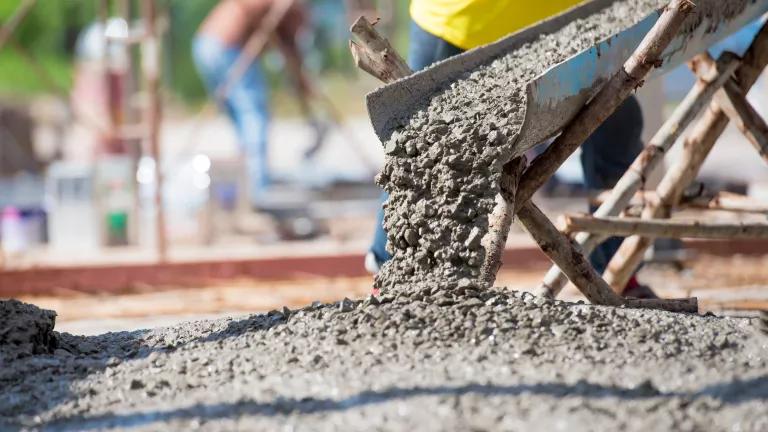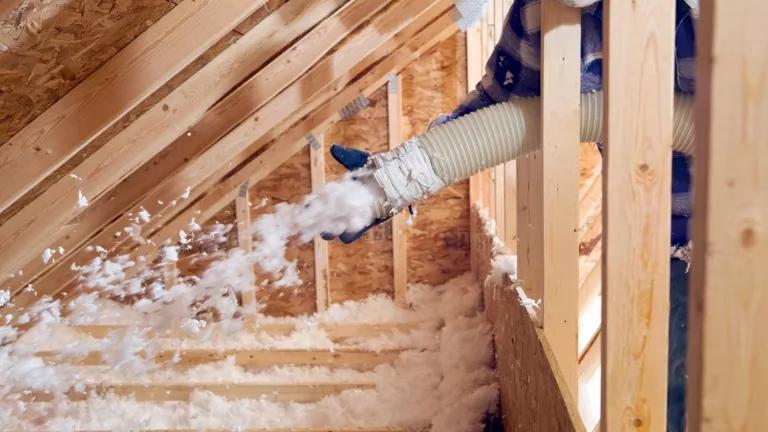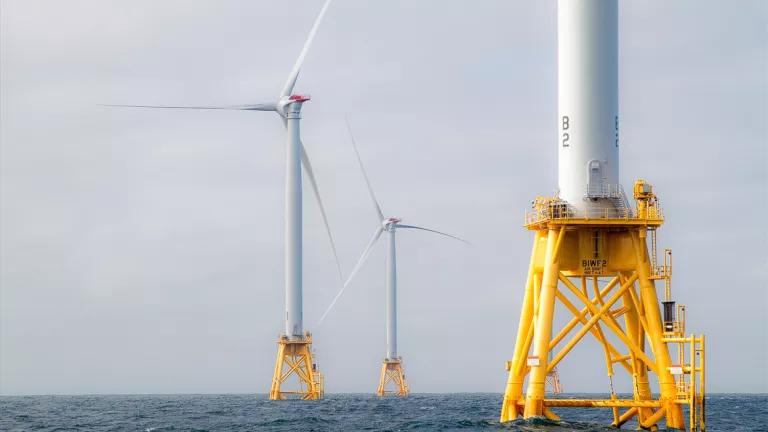Biden Administration Takes Important Step in Buying Clean
The Government Services Administration will set a new standard for contractors to use low embodied carbon concrete, and new standards for environmentally preferable asphalt—part of a federal Buy Clean policy to reduce industrial emissions via public procurement.

The Biden Administration has taken an important step forward in leveraging the purchasing power of the federal government to grow the market for cleaner industrial materials.
For the first time, the General Services Administration (GSA), which is responsible for delivering much of the space requirements of federal agencies and oversees $75 billion in annual contracts for the federal government, announced last week that it will set a new standard for contractors to use low embodied carbon concrete in all its major construction projects, and to meet new standards for environmentally preferable asphalt. The standards, which go into effect immediately, will also apply to construction projects funded through the Infrastructure Investment and Jobs Act (IIJA)—namely the $3.4 billion the government will spend to modernize 26 land ports of entry along the border with Canada and Mexico. The move adds to growing momentum around a federal Buy Clean policy to reduce industrial emissions via public procurement.
The opportunity to use government procurement to reduce climate pollution in sectors like concrete is immense. Consider that concrete is the most widely used building material on earth and its key binding ingredient, Portland cement, is so highly carbon-intensive to produce that it is responsible for roughly 8% of climate pollution globally. Because of concrete’s ubiquity in our built environment (think of all the sidewalks, buildings, roads, and bridges you see when you walk out your door), requiring even small improvements to its carbon footprint can add up to major climate benefits. What’s more, there is a growing suite of technologies and approaches, ranging from the cutting edge to the decidedly low-tech, available to concrete manufacturers to do just that, often at low or modest cost.
However, to date, without a clear signal from their customers that they prefer lower carbon building materials, concrete manufacturers had little incentive to reduce the amount of cement getting mixed into their final product, or to innovate in other ways to reduce the embodied carbon in ready mix concrete. With this GSA announcement, as well as action in leadership states across the country, that is beginning to change.
Federal contractors will now have to provide Type III Environmental Product Declarations (EPDs)—a best practice tool for tracking embodied GHG emissions in industrial building materials and products—for each concrete mix design specified in the contract and used at the site of a GSA project requiring more than 10 cubic yards of concrete. To qualify as “low-embodied carbon concrete” under GSA’s new standard, mixes will have to meet a 20% reduction in carbon intensity limit proposed by the New Buildings Institute for inclusion in building codes.
For asphalt, contractors will likewise have to provide Type III EPDs for each asphalt mix specified in the design and used at the project. To qualify as “environmentally preferable asphalt,” a mix will have to be either manufactured or installed using at least two of several environmentally preferable techniques detailed in GSA’s new standards.
These moves come alongside efforts in multiple states to use their own procurement to reduce emissions from concrete. Like the federal government, states are major purchasers of widely used construction materials and nearly one-third of all concrete used for construction in the US is procured by state and local governments. In California, legislation has been introduced to add concrete to the state’s Buy Clean law. In New York and New Jersey, model low carbon concrete procurement bills have gained considerable support for passage this session. Other states from Virginia to Illinois and others are also joining the drumbeat.
Altogether, by creating immediate demand for lower carbon concrete, these efforts will help incentivize companies to adopt cleaner manufacturing processes and disclose their emissions. And, as more companies move in this direction to compete for federally funded (or state) construction business, those same manufacturers will be able to sell to buyers in the private market alongside the public sector, generating positive spillover effects and additional emissions savings.
This summer, the Biden Administration’s new Buy Clean Task Force will publish recommendations for how the federal government can advance a more robust Buy Clean policy, including which materials and pollutants to cover, how to increase transparency around embodied carbon emissions, and launching pilot programs to increase federal procurement of clean construction materials.
Extending the GSA’s initiative to cover concrete purchases made by other agencies – particularly the US Department of Transportation as it moves to implement IIJA’s historic levels of spending on surface transportation – will be critical, as will addressing federally funded purchases of additional emissions-intensive industrial materials. Further, it’s critical for public procurement programs to incentivize manufacturers to reduce emissions above and beyond the minimum standard announced by GSA. Doing so will encourage continuous innovation towards deeper decarbonization of these important products and sectors.


